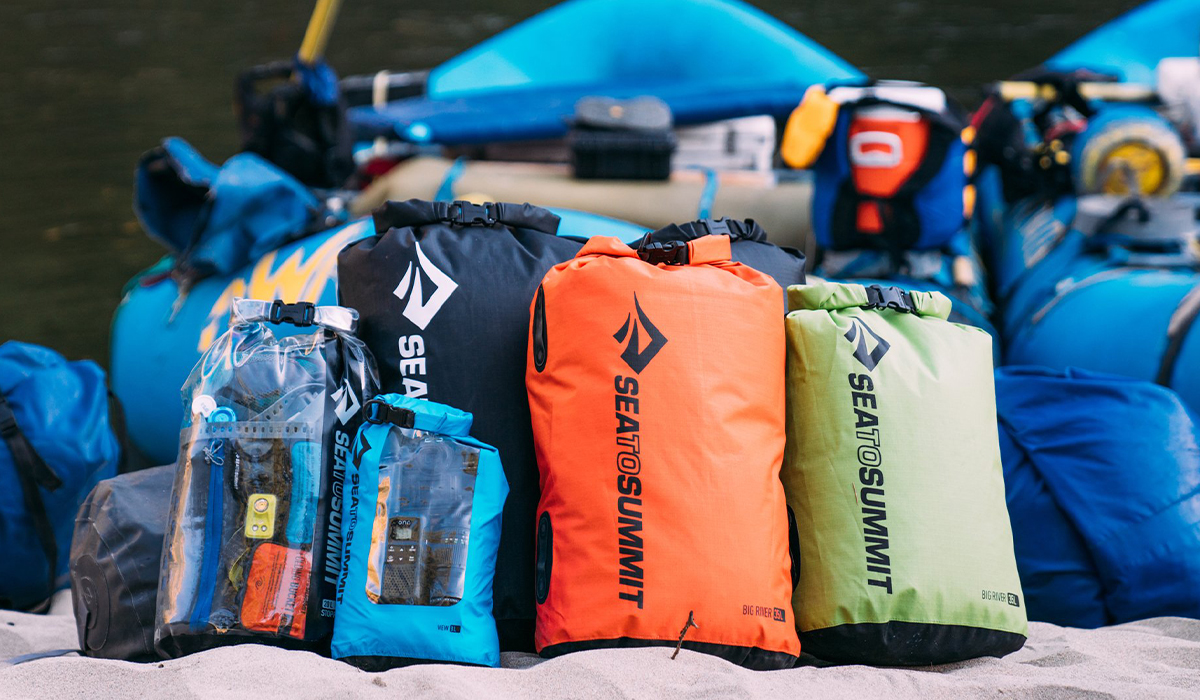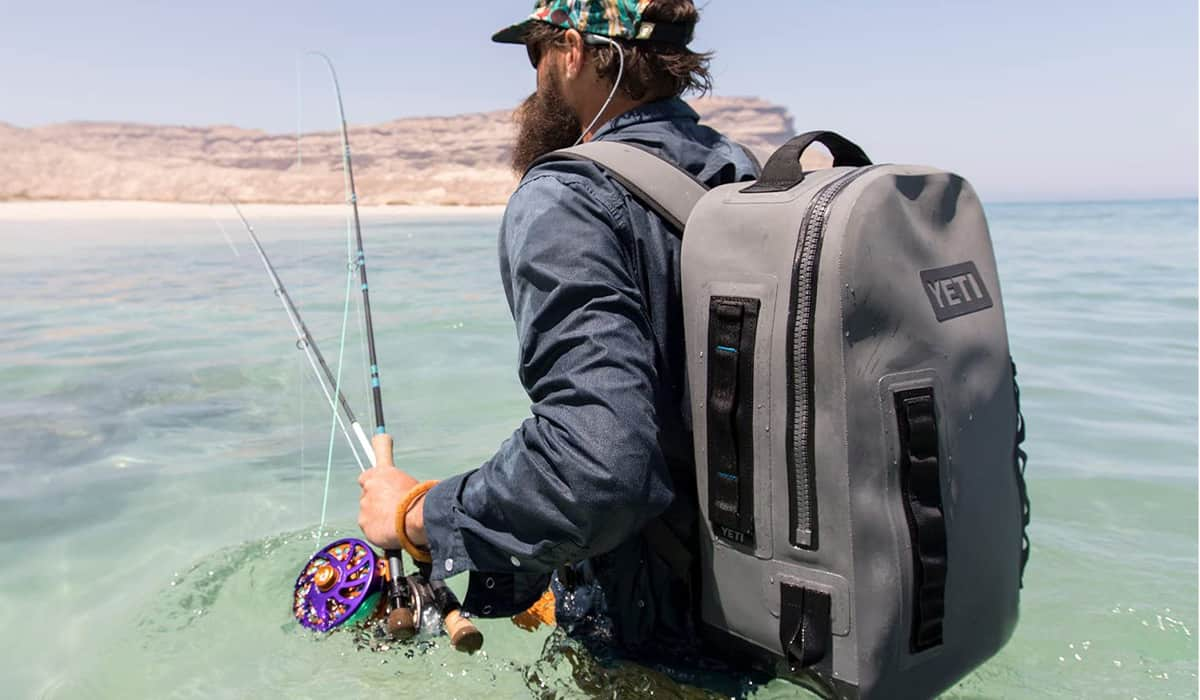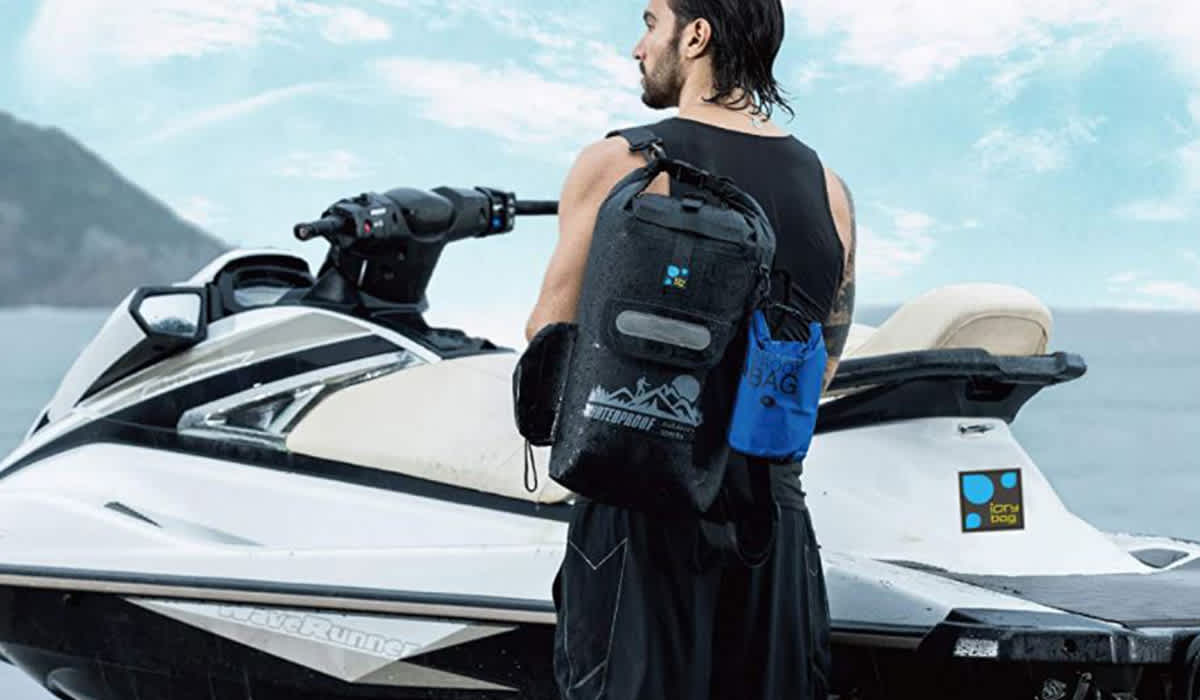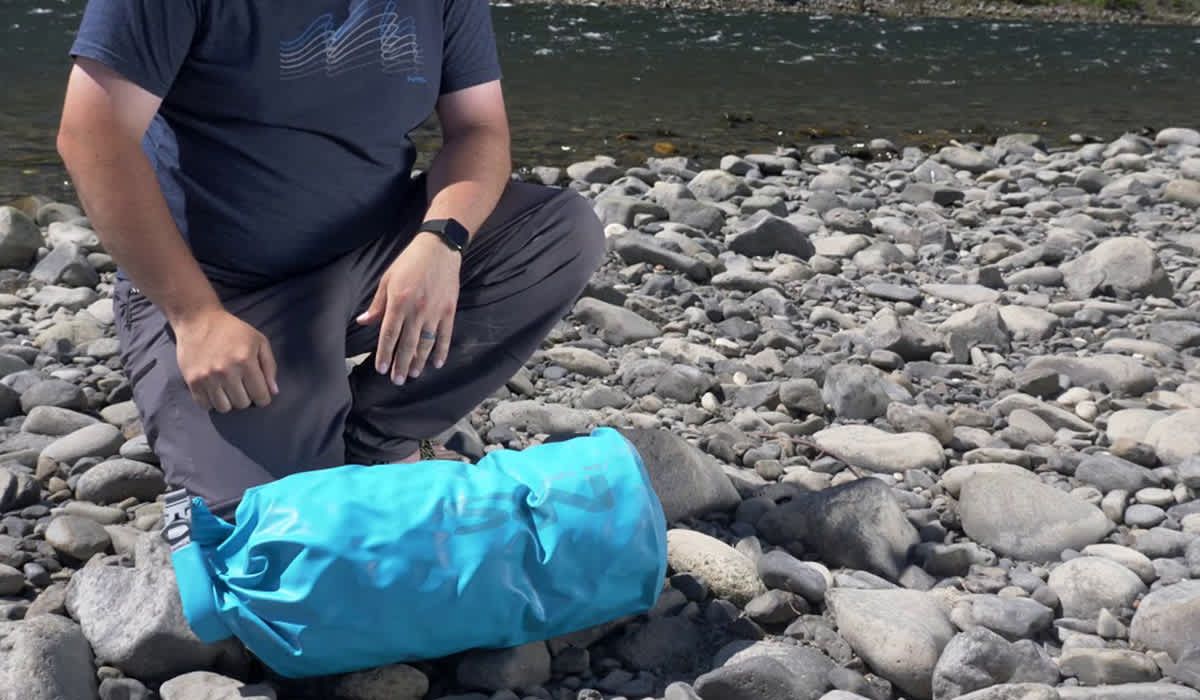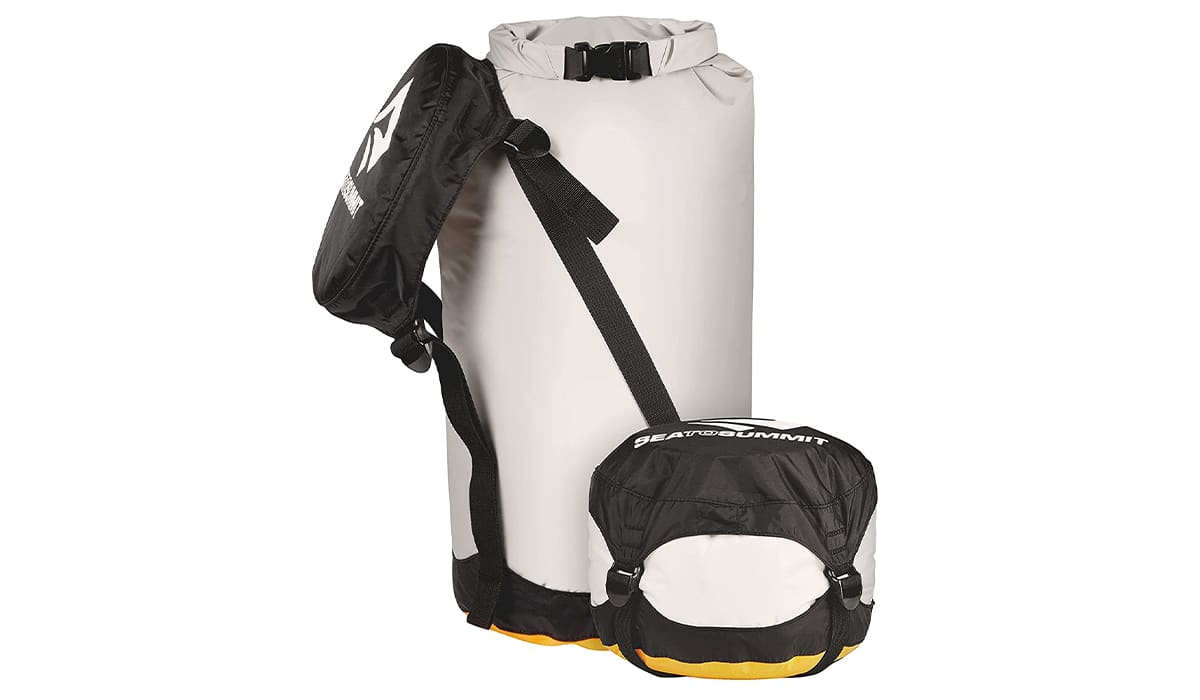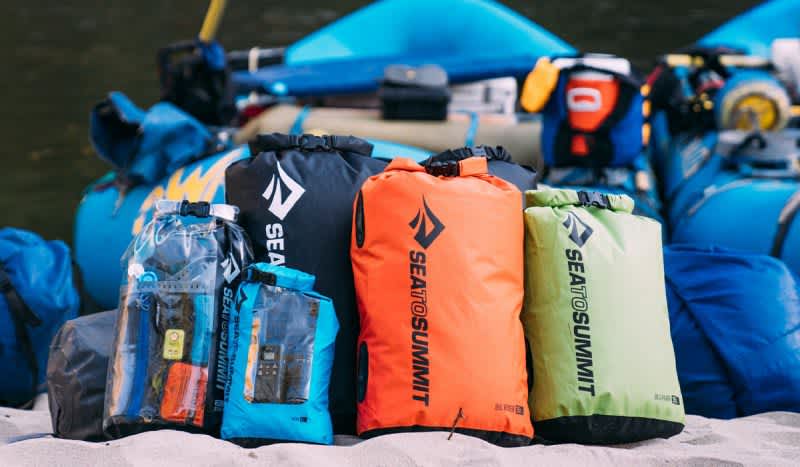
+
–
Table of Contents
1. Yeti Panga Airtight Dry Bag – Editor’s Pick
Yeti has a great reputation when it comes to durable and capable outdoors items. The Yeti Panga Airtight is their offering to the dry bag scene and it comes in several different configurations. My personal favorite is the Panga Airtight Backpack which is truly a 100% dry bag. The Panga features Yeti’s Hydrolok zipper which gives it not only a 100% waterproof seal but a 100% airtight seal as well. The bag features a large single internal compartment with one mesh pocket to store essentials like keys and your cell phone for quick access.
The internal storage space is a full 28L and although it is 100% waterproof Yeti does point out that it isn’t a cooler. Many have said that the Panga Airtight is the king when it comes to durability and with its puncture and abrasion resistant construction. The Yeti Panga Airtight can be found online for $299.99.
Pros/One of the toughest completely waterproof bags on the market
Cons/Some reviews say the Hydrolok zippers don’t stand the test of time, It’s pricey, too
Bottom Line/A great bag for any type of adventure where you can expect to encounter water
2. Luck Route Dry Bag – Budget Pick
The Luck Route Dry bag comes in first place when it comes to affordability outside of a garbage bag. The small waterproof dry bag not only comes with a completely waterproof primary container but also features a small external bag specifically designed for your smartphone that still allows you to use it even though it’s in a completely waterproof container.
The Luck Route Dry bag comes in two different colors (yellow and black) and features several smaller waterproof pockets in addition to its primary large pocket. What’s great about this is that the straps are not only comfortable but extremely adjustable so that you can get the right fit no matter what you’re doing or where your adventure brings you.
Pros/Compact, durable, affordable, and versatile
Cons/On the smaller side of dry bags so not very suitable for long distance trips
Bottom Line/Great for just about anything outside of long treks through the desert
3. IDRYBAG Floating Waterproof Backpack
What good is your waterproof bag if it ends up on the bottom of a river or lake? That is the ethos behind the IDRYBAG waterproof floating backpack. The backpack comes in two different configurations (either a 20L or 30L size) and features a roll top waterproof outer shell with several additional zippered pockets that are also splash resistant.
The bag itself features the capability of floating when not completely weighted down and if it does happen to sink, the bag has a 6 meter waterproof rating. The IDRYBAG comes with a small external 2L bag for storing sensitive electronics or smaller items you need quick access to. The IDRAYBAG 20L Floating Waterproof backpack comes in 4 different colors and is available for $47.99
Pros/Sturdy 500D construction and plenty of extra pockets
Cons/Many reviews state that the bag tends to fade and crack when exposed to sun over time
Bottom Line/Perfect for kayaking, paddle boarding or a day out on the lake with the boat
4. NRS 110L Bill’s Bag Dry Bag
This humongous bag speaks to me as a native of the Pacific Northwest. Rain is a constant concern there even during the summertime and all it takes is one massive rain shower to turn you back on the trail before you’ve even finished your first day. The NRS 110L Bill’s Dry Bag is perfectly equipped to keep all of your backpacking gear dry with its StormStrip closure system which provides you with both easy access to your gear and a solid seal against external moisture.
Each of the compression straps and shoulder straps feature aluminum fasteners for extreme durability and the adjustable harness is one of the most comfortable in the business making long treks no problem, even with heavy loads. In total, Bill’s Dry bag offers you 6700 cubic inches of storage capacity but can be cinched down if you don’t need all of it and it will still retain its waterproofing capabilities. The NRS 110L Bill’s Dry Bag is available for $159.95
Pros/One of the largest bags in the dry bag lineup
Cons/Not 100% waterproof and internals can be exposed to water if not properly packed
Bottom Line/A simple design with large capacity and perfect for a long range backpacking trip
5. Sea to Summit eVent Compression Dry Sack
This one might slightly break the theme for the day but I think it still applies. I genuinely like gear that can work as both a primary means of use and also as a contingency. The Sea to Summit eVent is a compression sack meant for use as a sleeping bag, however, it works just as well and is also marketed as a dry sack that is capable of being stored in a compressed state and opened up to fit clothing.
The internal storage space is about 30L meaning it is about the size of a large backpack. This may be a great option to take with you on backpacking trips where you expect to come back with wet clothing or might encounter situations where you need to stuff some sensitive gear or clothing away while the rest of your stuff gets wet. The Sea to Summit eVent Compression Dry Sack/Bag is available for $52.95
Pros/Works as both a sleeping sack/bag and compression dry bag
Cons/No carry strap and is still semi-bulky when completely compressed
Bottom Line/One of the most popular dry bags for backpackers and campers
How to use a dry bag
Most of us don’t plan to get wet when we go out on adventures and if we do we usually make accommodations for that expected event. However, on a lot of trips running into water unexpectedly happens often and it pays to come prepared unless you’re willing to haul around wet gear and the extra weight that comes with that.
Most dry bags have a roll-down top that secures with clips or straps. Some, like the Yeti, use a waterproof zipper. These can work great, but you need to care for them with the proper lubricant to keep everything sealing properly. As long as you make the seal tight when you roll it down, you should be good to go.
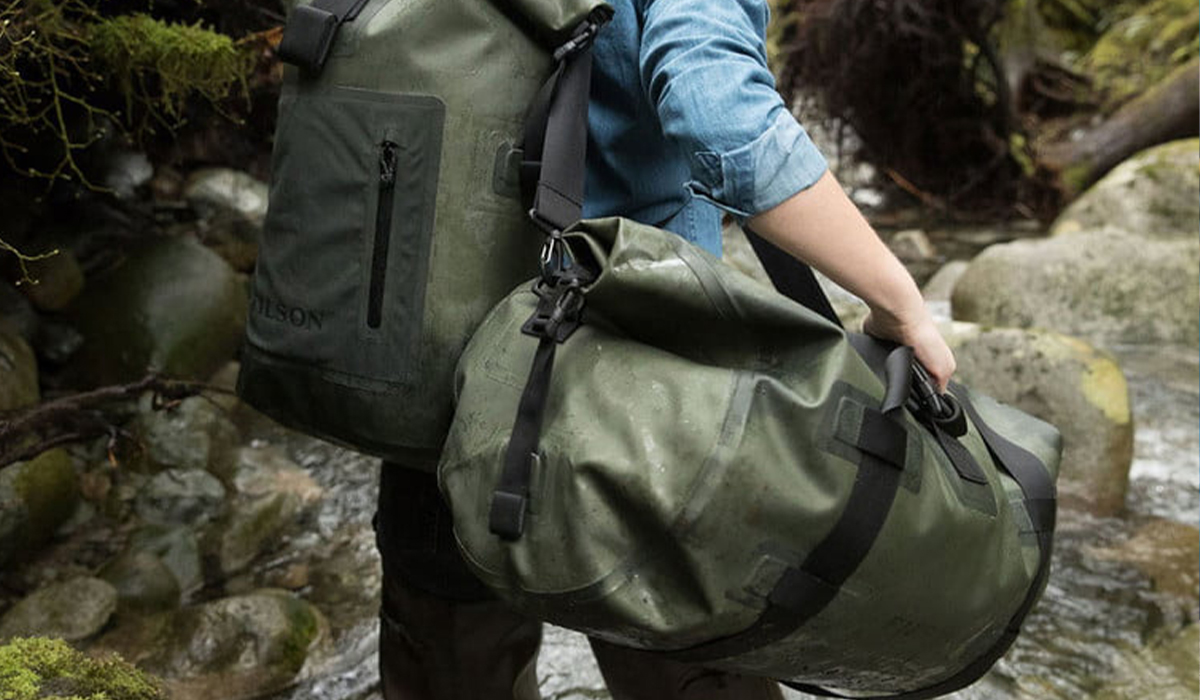
Picking the right type of closure system
You’ll generally find only two methods of closure, and each has its advantages and disadvantages. Zipper top bags are quick and easy to access and provide a good amount of protection from water and sometimes even waterproof closure, however, I personally tend to find that zippers always break over time and not all companies adhere to the same level of quality when it comes to their sippers and seals.
A far more durable and reliable option would be the roll-top closure method which usually relies on buckles with the top closed to secure it against moisture ingress. The only downside is that roll-tops don’t give you quick access to your stuff when you need it but I think it’s a small price to pay for the comfort of knowing your stuff won’t get soaked.
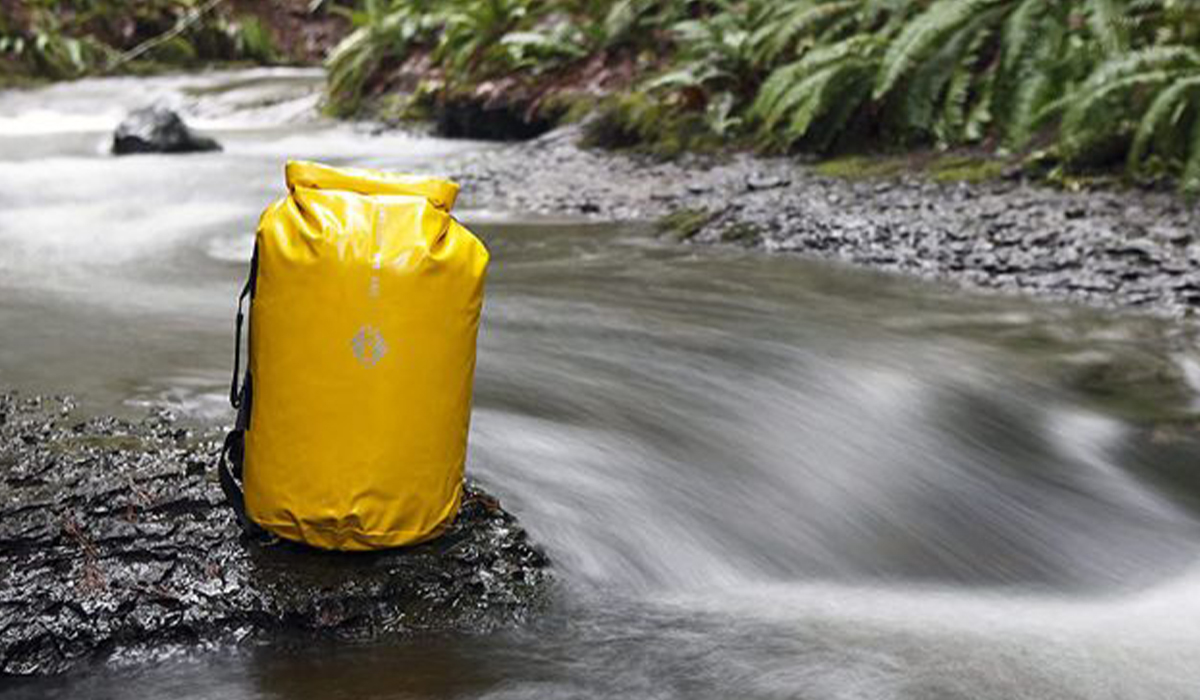
Dry bag materials
Dry bags generally come made from Polyester, CORDURA coated vinyl and PVC. PVC is by far the strongest of these materials, but it also happens to be the heaviest. If you’re looking for a durable and waterproof material then PVC is the way to go provided it has a durable and reliable closure method. Nylon coated with CORDURA is probably the most versatile option providing a good balance of waterproofing, durability, and lightweight construction.
What should I look for in a dry bag?
You’ll need to know the volume you need a bag to have so you have enough room for your stuff. You should also check to see how it is set up to transport. If you need a shoulder strap, for example, make sure the bag is set up to use one.
Are dry bags really waterproof?
As long as the bag is closed properly and the seal holds, most available dry bags will remain waterproof. Keep in mind, the bag is only as good as the seal, so you play a part in how well it’ll work.
We are committed to finding, researching, and recommending the best products. We earn commissions from purchases you make using the retail links in our product reviews. Learn more about how this works.
